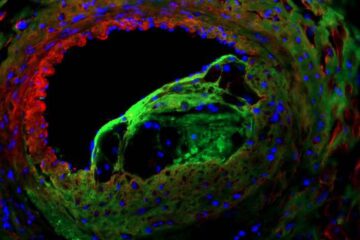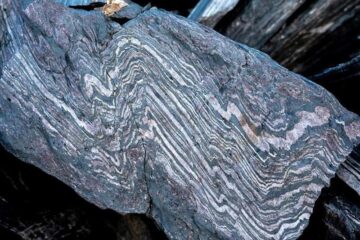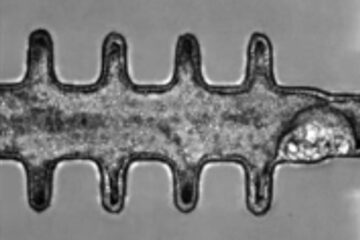MRI accurately depicts deep endometriosis

“Pelvic MRI at 3 Tesla is a noninvasive technique that allows a complete examination of the pelvis,” said the study's lead author, Nathalie Hottat, M.D., from the Department of Radiology at Erasme Hospital and the Université Libre de Bruxelles in Brussels, Belgium. “It accurately depicts all locations of deep endometriosis.”
Endometriosis is a chronic and painful disease that results when uterine tissue, called endometrium, grows outside the uterus. Endometrium can attach to other organs, such as the ovaries, fallopian tubes, bowels and bladder. Endometriosis is one of the most common health problems affecting women. According to the U.S. Department of Health and Human Services, approximately 5 million American women have endometriosis. Symptoms include chronic pelvic pain, lower back pain, painful sexual intercourse, painful menstrual cramps, fatigue and infertility.
There are two types of endometriosis: superficial and subperitoneal (deep). Deep endometriosis infiltrates areas of the cervix, vagina and/or the colon, and, less frequently, the bladder and ureter. Superficial endometriosis can be treated with laparoscopy, but deep endometriosis sometimes requires complete surgical excision of the lesions.
It is important that the diagnosis and staging of the disease distinguish between the two types in order to guide the surgeon to schedule the most appropriate procedure. Therefore, the researchers set out to determine the accuracy of 3-T pelvic MRI in diagnosing the presence of deep endometriosis and to evaluate colon wall involvement.
The researchers studied 41 women, age 20 – 46, with suspected endometriosis. MRI was performed prior to surgery. MRI accurately diagnosed 26 of 27 cases of deep endometriosis. In addition, MR images accurately depicted specific locations of deep endometrial lesions.
“The 3-T MRI results also demonstrated a high negative predictive value of 93.3 percent,” Dr. Hottat said, “meaning that MRI findings accurately ruled out deep endometriosis in patients with superficial endometriosis, allowing the surgeon to perform the less invasive laparoscopic procedure.”
Colon wall involvement was present in 32 percent of patients with deep endometriosis. MRI was effective at distinguishing different layers of the affected colon wall and accurately depicted the degree of colon wall invasion.
“Endometriosis: Contribution of 3.0-T Pelvic MR Imaging in Preoperative Assessment—Initial Results.” Collaborating with Dr. Hottat were Caroline Larrousse, M.D., Vincent Anaf, M.D., Ph.D., Jean-Christophe Noël, M.D., Ph.D., Celso Matos, M.D., Julie Absil, Ph.D., and Thierry Metens, Ph.D.
Radiology is edited by Herbert Y. Kressel, M.D., Harvard Medical School, Boston, Mass., and owned and published by the Radiological Society of North America, Inc. (http://radiology.rsnajnls.org/)
RSNA is an association of more than 43,000 radiologists, radiation oncologists, medical physicists and related scientists committed to excellence in patient care through education and research. (RSNA.org)
For patient-friendly information on MRI, visit RadiologyInfo.org.
Media Contact
More Information:
http://www.rsna.orgAll latest news from the category: Medical Engineering
The development of medical equipment, products and technical procedures is characterized by high research and development costs in a variety of fields related to the study of human medicine.
innovations-report provides informative and stimulating reports and articles on topics ranging from imaging processes, cell and tissue techniques, optical techniques, implants, orthopedic aids, clinical and medical office equipment, dialysis systems and x-ray/radiation monitoring devices to endoscopy, ultrasound, surgical techniques, and dental materials.
Newest articles

Solving the riddle of the sphingolipids in coronary artery disease
Weill Cornell Medicine investigators have uncovered a way to unleash in blood vessels the protective effects of a type of fat-related molecule known as a sphingolipid, suggesting a promising new…

Rocks with the oldest evidence yet of Earth’s magnetic field
The 3.7 billion-year-old rocks may extend the magnetic field’s age by 200 million years. Geologists at MIT and Oxford University have uncovered ancient rocks in Greenland that bear the oldest…

Mini-colons revolutionize colorectal cancer research
As our battle against cancer rages on, the quest for more sophisticated and realistic models to study tumor development has never been more critical. Until now, research has relied on…





















